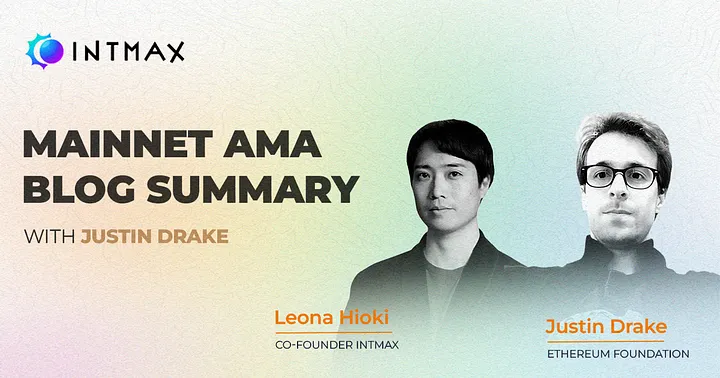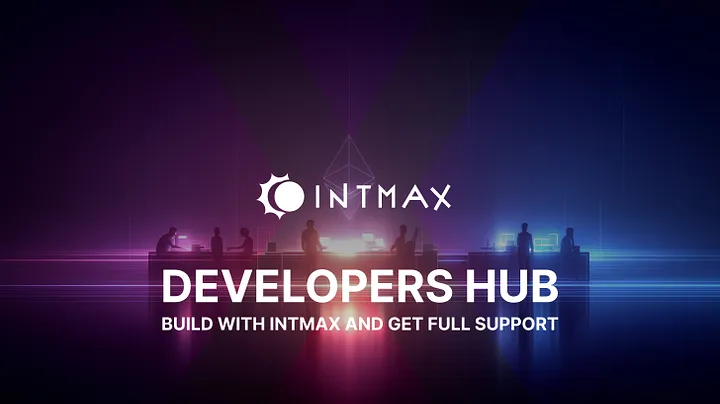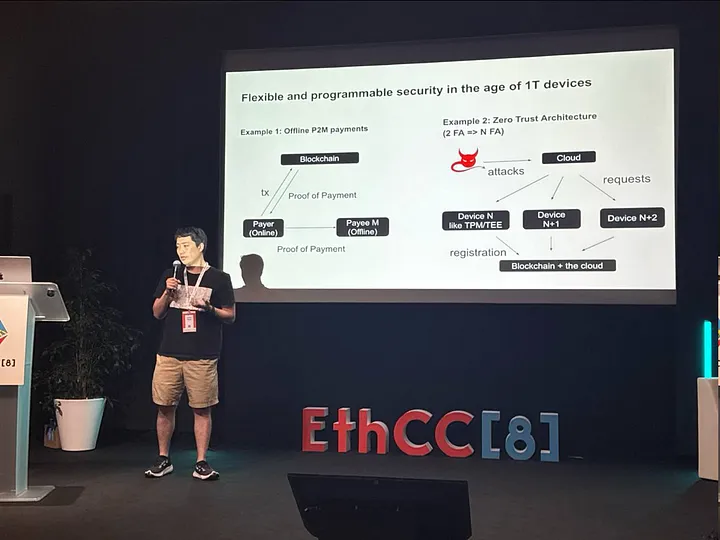Blog
Insights
INTMAX Mainnet Launch AMA — A Deep Dive into Privacy, Payments, and the Future of Ethereum

Intmax
Jul 2, 2025
On May 26, 2025, INTMAX celebrated a major milestone: the official launch of its mainnet. To mark the occasion, INTMAX hosted a live AMA featuring Justin Drake of the Ethereum Foundation, alongside INTMAX’s co-founders Leona, Mai, and Chief of Staff Rie. The discussion covered not only INTMAX’s groundbreaking privacy mining mechanism, but also vital topics like Ethereum scaling, Bitcoin security, and the future of blockchain privacy. Here’s a detailed recap.
The Role of INTMAX in Payments and Privacy
Leona opened the AMA by emphasizing why payments remain one of the toughest challenges for blockchain technology. “Payment is infrastructure,” he said. “It’s not just about creating excitement — it’s about trust, reliability, and scalability. That’s where INTMAX has a special role to play.”
INTMAX’s signature innovation is Privacy Mining, a novel way to incentivize users to contribute to collective privacy. Rie explained the simple yet powerful concept: users deposit and withdraw ETH in predetermined amounts through the INTMAX protocol. Their transactions are made unlinkable, shielding not just their own data, but strengthening privacy for the entire network. In return, participants earn ITX tokens.
Leona further elaborated on the vision behind INTMAX’s privacy design:
Large and diverse anonymity sets — encouraging participation from a wide variety of users.
Meta-privacy — ensuring that no one can infer who belongs to which group (e.g., privacy enthusiasts vs. casual users).
Stable privacy over time — avoiding spikes or lulls in the anonymity set that could weaken privacy guarantees.
This emphasis on what Leona called the “purity of privacy” is what sets INTMAX apart from mixers or other anonymity solutions.
Ethereum L1 Scaling and the Role of L2s
The conversation turned to the broader Ethereum ecosystem. Leona asked Justin Drake how Layer 2 solutions like INTMAX fit into Ethereum’s scaling roadmap — especially given plans to dramatically increase L1 capacity.
Justin shared his vision: Ethereum’s L1 could ultimately function like a giant ZK-rollup, with validators verifying succinct proofs rather than full blocks. This could increase throughput by up to 1,000x, but even that wouldn’t meet global demand. “A gigagas per second is only about 0.1 transaction per day per human,” Justin noted. “We’ll still need L2s to scale horizontally.”
He also highlighted why privacy is best handled at the L2 level. Embedding privacy directly into Ethereum L1 would introduce serious risks — for example, a ZK-related bug could enable undetectable infinite minting. By keeping L1 simple and secure, privacy innovations like INTMAX can flourish on L2s.
Bitcoin’s Security Challenges
In one of the most thought-provoking segments, Justin outlined why Bitcoin’s long-term security model is unsustainable. As Bitcoin issuance declines (due to its 21 million coin cap), miner revenue will increasingly rely on transaction fees. But today, fees account for only about 1% of miner income — and fee levels have hit a 14-year low.
Justin warned: within the next decade, Bitcoin could become vulnerable to 51% attacks. The power required to attack the network would shrink dramatically, potentially allowing a single large mining farm or nation-state to overpower it. Unlike Ethereum’s proof-of-stake system, Bitcoin’s proof-of-work offers no clean way to eject attackers or recover from such a breach.
The Case for Proof-of-Stake
Leona and Justin discussed how proof-of-stake (PoS) provides far greater economic efficiency and resilience. In PoW, maintaining $10 billion of economic security costs about $10 billion annually. In PoS, the cost is simply the opportunity cost of staked capital — typically single-digit percentages — making PoS 20–100x more efficient.
Justin argued that Ethereum’s combination of PoS, scalability, and credible neutrality positions it as the monetary asset of the future, potentially overtaking Bitcoin over the coming decades.
Why Privacy Matters — for Everyone
Leona brought the discussion back to privacy, stressing its importance not only for individuals but also for institutions. “Today, only famous addresses like Vitalik.eth are intensely tracked. But with AI-powered analytics, everyone could become traceable within just a few years. Without privacy, blockchain can’t protect people in the real world from threats like physical or social attacks.”
INTMAX aims to solve this by encrypting assets and shielding transaction flows — ensuring that blockchain protects users both on-chain and off-chain.
What Makes INTMAX Stand Out?
When asked whether INTMAX is the best privacy protocol, Leona humbly noted that other great projects exist (e.g., Tornado Cash, Railgun). But he highlighted why INTMAX excels at payments:
Ultra-low fees
High throughput
Strong privacy via a two-hop architecture: sender anonymity set on-chain, recipient hidden — offering privacy akin to Monero, but more efficient for payments.
Mai wrapped up by inviting users to explore INTMAX’s features. “My personal favorite is bulk transfer — you can send to 63 addresses at once, with constant low gas fees. And of course, Privacy Mining starts from just 0.1 ETH. We’d love your feedback!”
The Road Ahead for Ethereum
Justin closed with insights into Ethereum Foundation’s renewed focus. The protocol team — now unified at 91 members strong — is laser-focused on L1 scaling, L2 scaling, and UX improvements over the next 6–12 months. He encouraged everyone to follow efforts like ethproofs.org, supporting zkEVM-based scaling.
Final Thoughts
The AMA provided not just a look at INTMAX’s launch, but a window into Ethereum’s evolving architecture and the future of blockchain privacy. With thought leaders like Justin Drake backing its vision, INTMAX is poised to make privacy a fundamental right — not an optional feature — for all Ethereum users.
To experience Privacy Mining and other innovations, visit: https://app.intmax.io



